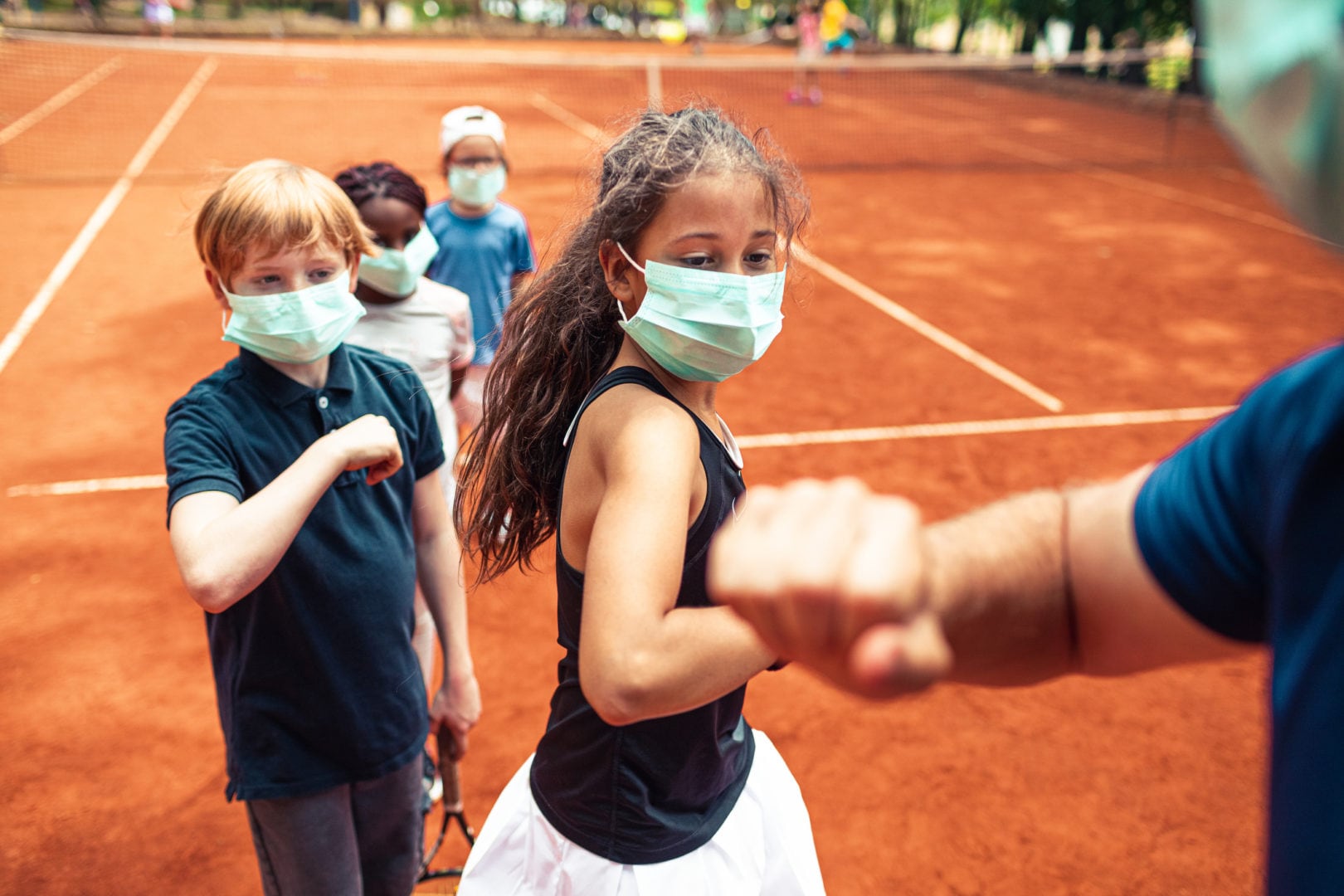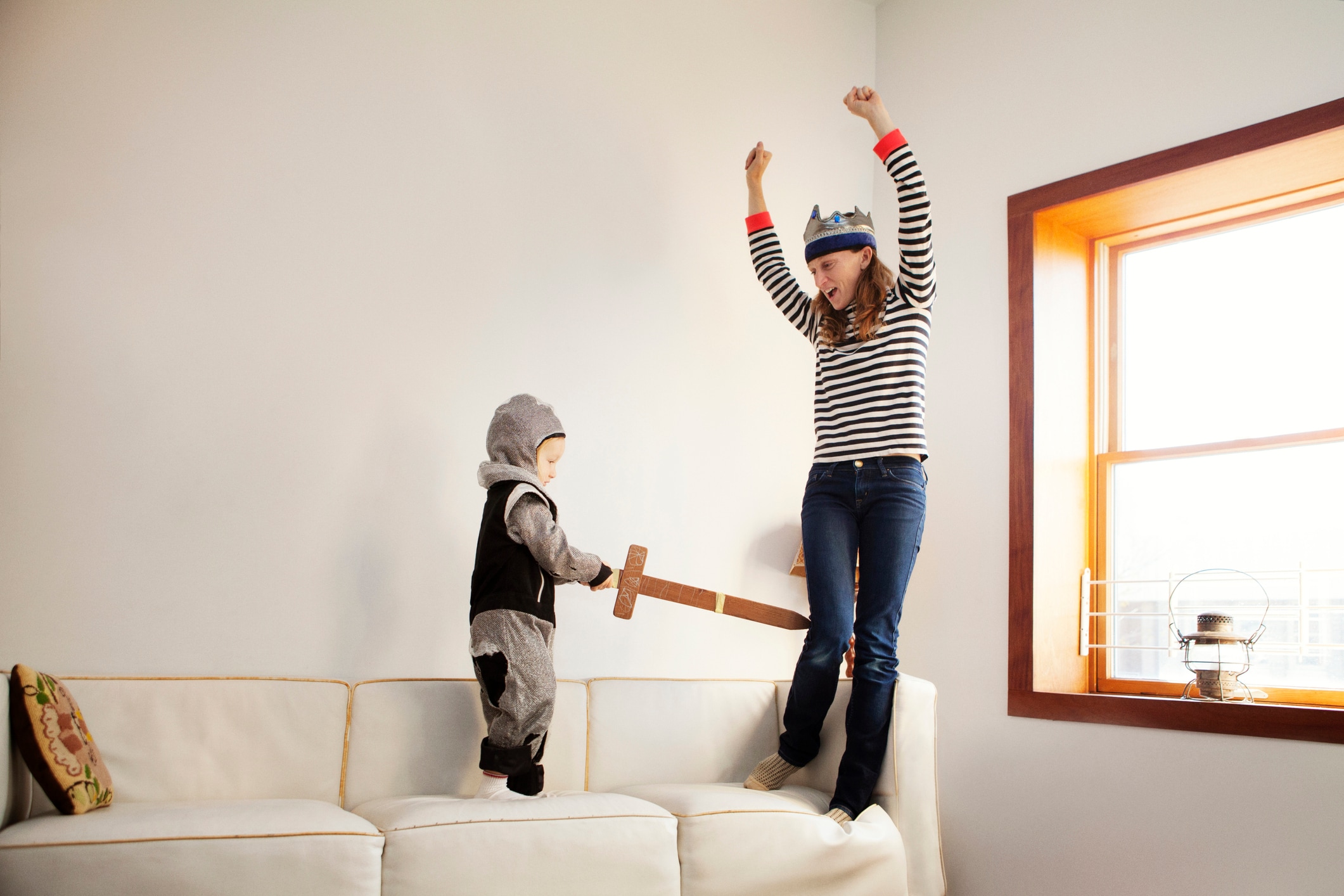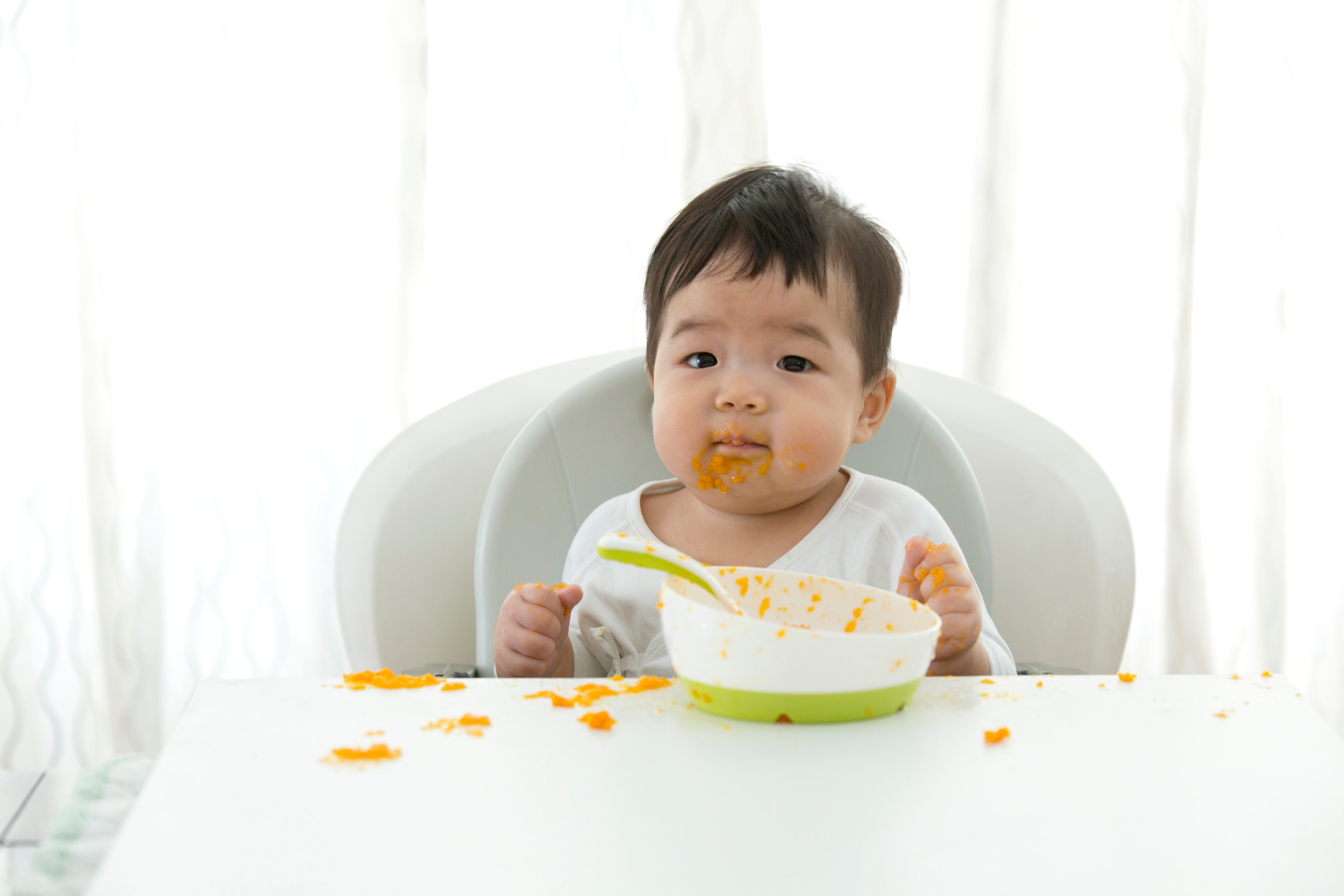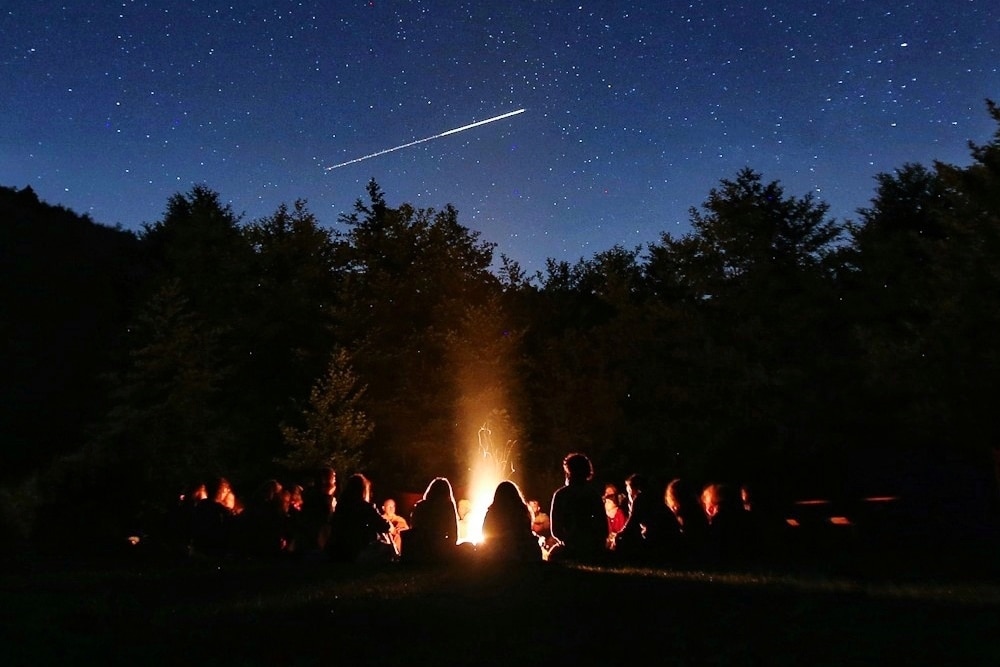Unlike last summer, when a good chunk of the world was still living life via Zoom, summer 2021 (fingers and toes crossed!) is fixing to be a little less bleak — particularly for families who opted out of their beloved summer camp traditions last year due to COVID-19. While risks are still present when it comes to summer camps and kids, this year, at the very least, parents have the opportunity to make more informed decisions than last.
“It’s completely understandable for families to grapple with the decision on whether or not to send their child to camp this summer,” says Dr. Rupal Udeshi, director of pediatrics at MedStar Montgomery Medical Center in Olney, Maryland and assistant professor of pediatrics at Georgetown University School of Medicine. “While camps offer a number of benefits, including helping kids grow their emotional, social and physical skills, as well as giving them the opportunity to engage with peers and other caring adults, these benefits have to be tempered with the risk of COVID-19.”
Camp still isn’t going to be what it was in 2019, but, if done right, parents can take comfort in the fact that there are a number precautions that can mitigate the risk of COVID-19 transmission. Here, experts break it all down.
What is the risk of getting COVID-19 during summer camp?
According to Dr. Larry Kociolek, pediatric infectious diseases specialist at Lurie Children’s Hospital of Chicago, one of the biggest COVID risk factors, but not the only one, for kids attending camp is community exposure. Simply put: If the virus is running rampant where you live come summer, the higher the chance of camp transmission.
“The risk of your child contracting COVID at camp is largely dependent on how pervasive it is in your community,” Kociolek explains. “If activity is low in your area — less than a 3-5% positivity rate — that would indicate safer camp.”
All of this said, it’s worth mentioning that recently published research in Pediatrics found that day camps that closely followed safety protocols (more on this in a bit) greatly reduced the risk of transmission within the camp — even in areas where community transmission was high. Again, nothing eliminates risk completely, but the authors of the study wrote: “These findings suggest that the benefit of in-person programming in recreation settings with appropriate mitigation may outweigh the risk of viral transmission.”
What safety precautions to look for in a summer camp
Tom Rosenberg, president and CEO of the American Camp Association (ACA), explains that before signing kids up for camp, make sure the facility is practicing “mitigation best practices.”
“Camps can mitigate and manage COVID-19 successfully by implementing the multilayer, risk mitigation best practices from last summer,” he says. “This includes campers and staff being diligent about mask-wearing and keeping kids in small cohorts while physical distancing.”
Here’s a breakdown of the safety precautions camps should be practicing:
-
Mask-wearing. “Sports and schools have safely opened and masking has helped that greatly,” Kociolek says. “Masks should always be worn indoors, and wearing them outdoors, where it’s safer, adds another layer of defense.”
-
Outdoor activities. “Outdoors is much safer than indoors,” Kociolek says. “A day camp in an area where weather permits mostly or exclusively outdoor activities will be much less likely to transmit COVID.”
-
Cohorts. According to the Centers for Disease Control (CDC), campers and counselors should be placed in cohorts, which limit the number of people with whom they’re interacting.
-
Physical distancing. “Physical distancing is important, especially indoors,” notes Kociolek. “The need to distance goes down slightly if campers are outdoors and wearing masks.” The CDC adds that, ideally, cots will be spaced at least six feet apart for kids who nap at camp.
-
Daily symptom screenings. “Both overnight and day camps should pre-screen campers, as well as offer daily screenings and general surveillance,” Rosenberg says. Kociolek adds that parents should be vigilant for any signs of illness in children, and keep them home if they’re unwell.
-
Daily cleaning. Communal areas and frequently touched surfaces should be cleaned and disinfected routinely, according to the CDC, and shared objects among campers should be discouraged.
-
COVID-19 identification planning. “Inquire about policies regarding identifying someone who has COVID,” Kociolek says. “It’s important that camps are able to contact trace and notify anyone who’s been in contact with someone who’s tested positive.”
-
Staggered arrivals/dismissals. Rosenberg notes that camps should space out the arrival and dismissal of campers in order to maintain physical distancing. Additionally, the ACA recommends having just one parent or caregiver drop off or pick up.
-
Bus safety. Camps that use buses should make sure they’re cleaned and disinfected after each use and that everyone on board is wearing a mask. “Schools have safely opened across the country and buses have resumed operation in most of these schools,” Kociolek notes. “Maintaining masking has proven to be effective in these situations.”
-
No field trips. “Camps should consider eliminating trips, which create unnecessary exposure to the public,” Rosenberg says.
Sleep-away camp vs. day camp
Day camps and sleep-away (overnight) camps are two different beasts when it comes to mitigating COVID risk — the latter being much harder to control. “With sleep-away camp, it’s very difficult to mitigate risk,” Kociolek says. “You’re unlikely to find a camp that requires masks while sleeping or eating.”
For families who are considering sleep-away camp, Kociolek recommends looking into the safety practices the camp is employing. “Do they require a negative COVID test prior to accepting a new group of campers? Are vaccines requirements for staff? Do they have environmental controls in place to reduce spread, such as appropriate ventilation and policies for disinfecting? These are all things parents should find out about,” he says.
Rosenberg agrees that the “differences between day and overnight camps are vast.” However, he adds that both day and sleep-away camps should be enforcing a multistep screening process for campers. “The protective measures for day camps and overnight camps are quite similar,” he says. “In both, campers should go through three to four stages of screening: pre-screening, initial screening, ongoing screening and perhaps post-screening.”
Why it’s crucial to consider your unique family situation
Whether you’re considering an overnight camp or your local YMCA’s summer program, think about the potential effects COVID may have on your individual family.
“It’s important to discuss as a family each family’s individual risk profile prior to making a decision about camp,” notes Udeshi. “Questions to consider include: vaccination status of adults in the household, high-risk conditions for any household member, child care needs for parents and psychosocial needs for the child.”
“If you have high-risk, unvaccinated individuals in your household who could suffer serious consequences,” Kociolek explains, “the risks of sleep-away camp may be too great.”
While few situations in the COVID era are win-win, weighing everyone’s physical and mental risks and needs will make reaching a decision easier.
What precautions to take before sending kids to camp
In addition to considering the camp’s policies and precautions, make sure to do your part, as well. “Before starting camp, limit your family’s exposure for 10-14 days, which will minimize the risk of spread at camp,” Kociolek says. “Limit or avoid non-essential travel, and if you’re eligible, get vaccinated.”
Bottom line: Do your research
According to Udeshi, it’s crucial for parents to critically evaluate the camp and the safety protocols before signing kids up. “Camps that are conducted mostly outdoors, with masks and with good communication to families are going to be safer choices,” she explains. “Also, make sure the camp is following local, state and CDC guidelines for COVID-19 protection.”
Regardless of what you decide, capitalize on summer and get your family outside as much as possible after what was a long, strange winter for many. “Whether you send your child to camp or not, use the warm weather months to help your child reset,” Udeshi says. “Summer is a great time to make sure physical activity outdoors is a part of your family’s daily routine.”





